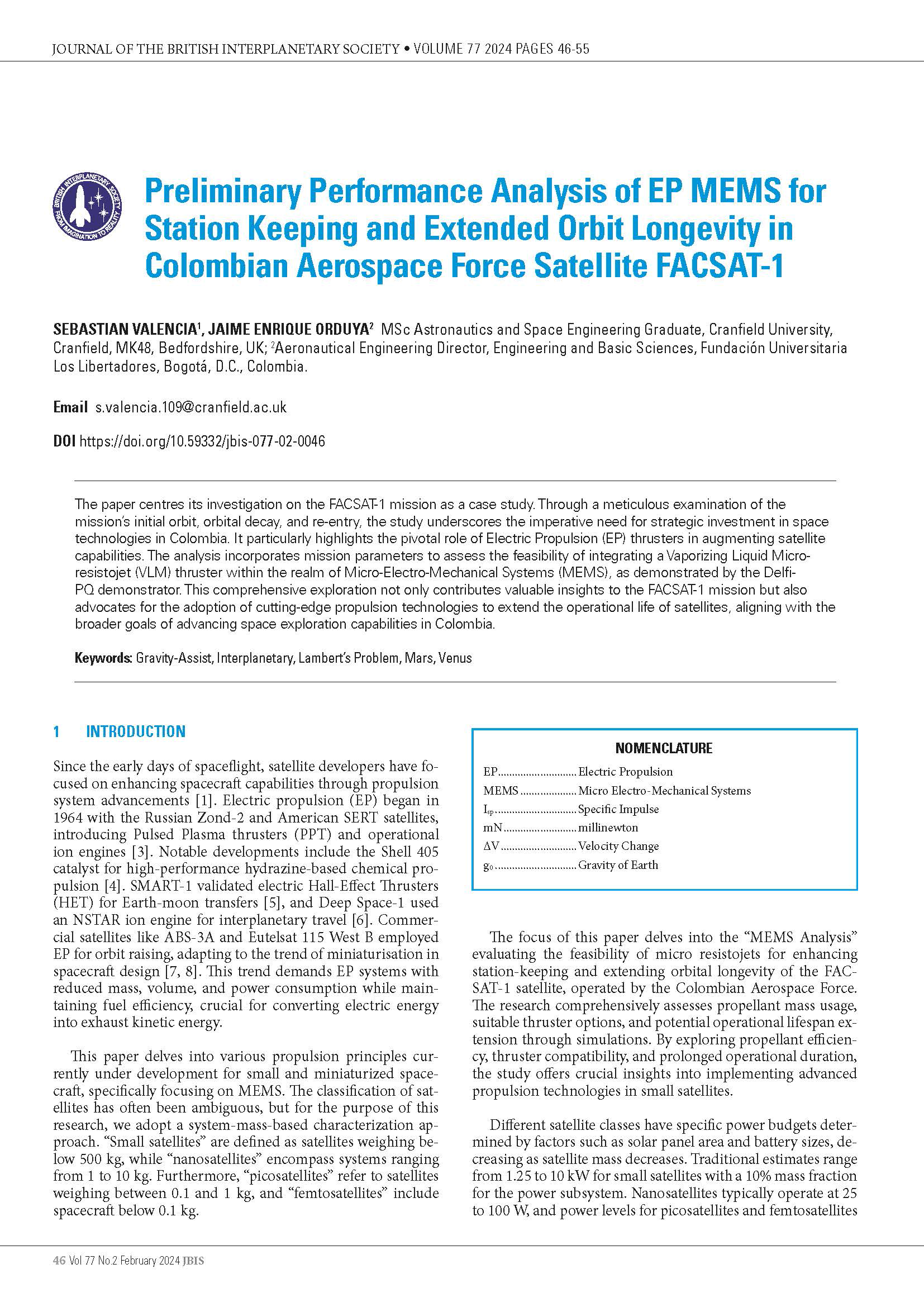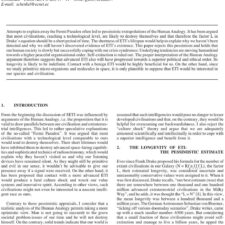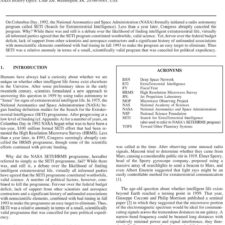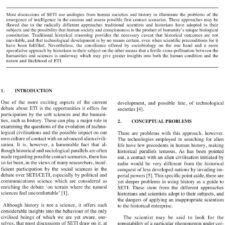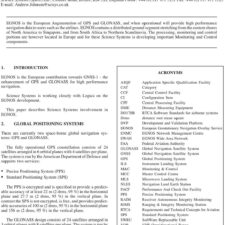Preliminary Performance Analysis of EP MEMS for Station Keeping and Extended Orbit Longevity in Colombian Aerospace Force Satellite FACSAT-1
£5.00
Sebastian Valencia (2024), JBIS, 77, pp.46-55
Refcode: 2024.77.0046
DOI: https://doi.org/10.59332/jbis-077-02-0046
The paper centres its investigation on the FACSAT-1 mission as a case study. Through a meticulous examination of the mission’s initial orbit, orbital decay, and re-entry, the study underscores the imperative need for strategic investment in space technologies in Colombia. It particularly highlights the pivotal role of Electric Propulsion (EP) thrusters in augmenting satellite capabilities. The analysis incorporates mission parameters to assess the feasibility of integrating a Vaporizing Liquid Microresistojet (VLM) thruster within the realm of Micro-Electro-Mechanical Systems (MEMS), as demonstrated by the Delfi- PQ demonstrator. This comprehensive exploration not only contributes valuable insights to the FACSAT-1 mission but also advocates for the adoption of cutting-edge propulsion technologies to extend the operational life of satellites, aligning with the broader goals of advancing space exploration capabilities in Colombia.
Keywords: Gravity-Assist, Interplanetary, Lambert’s Problem, Mars, Venus

